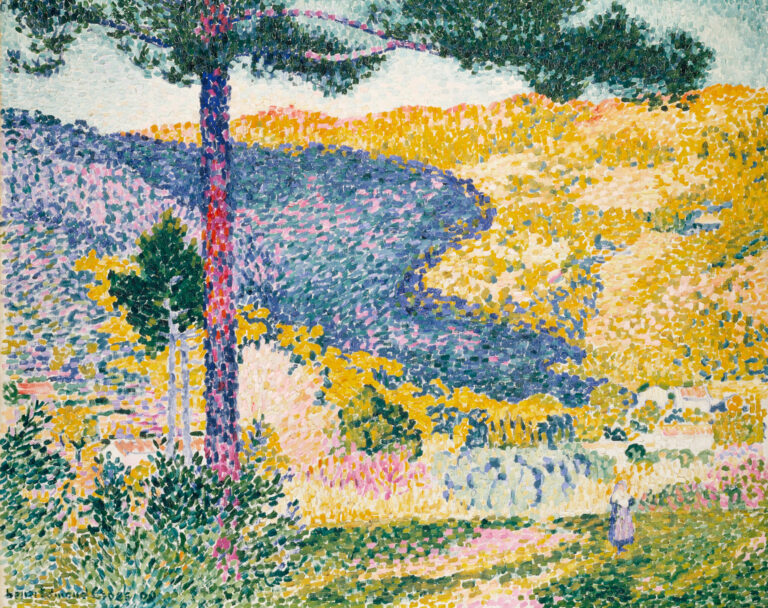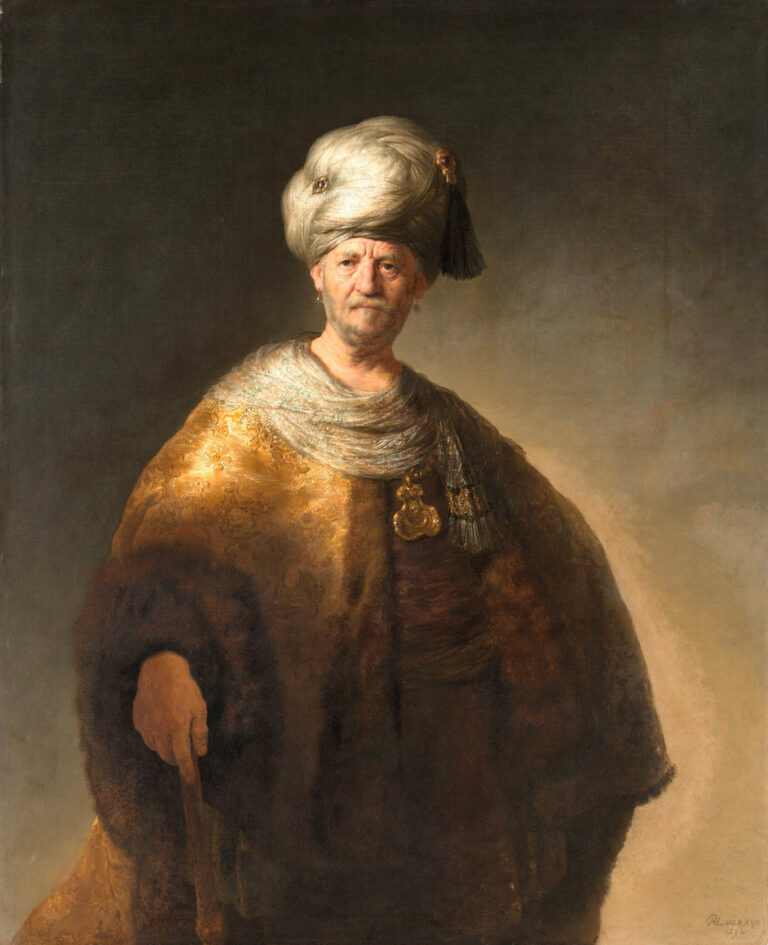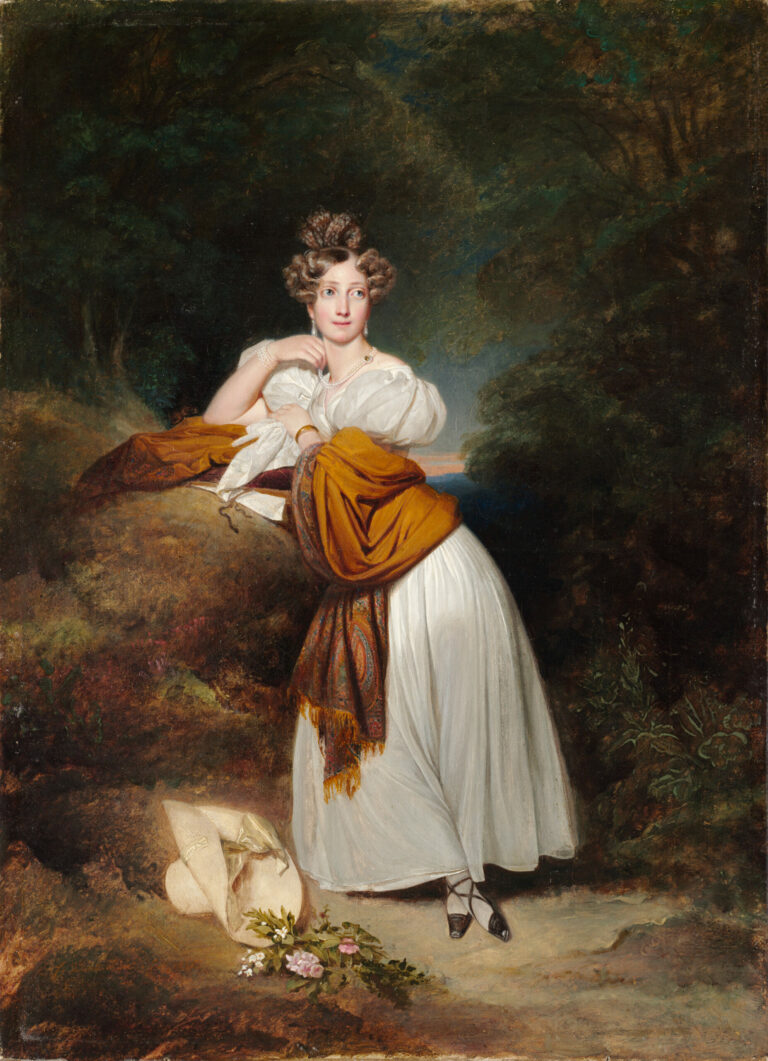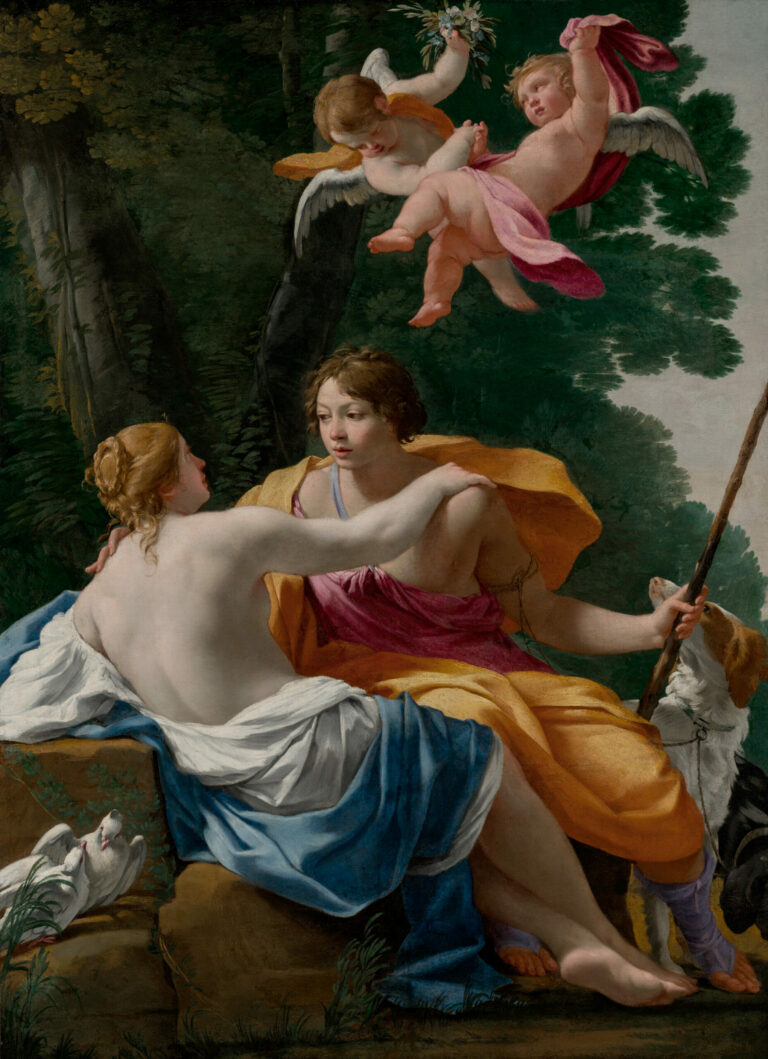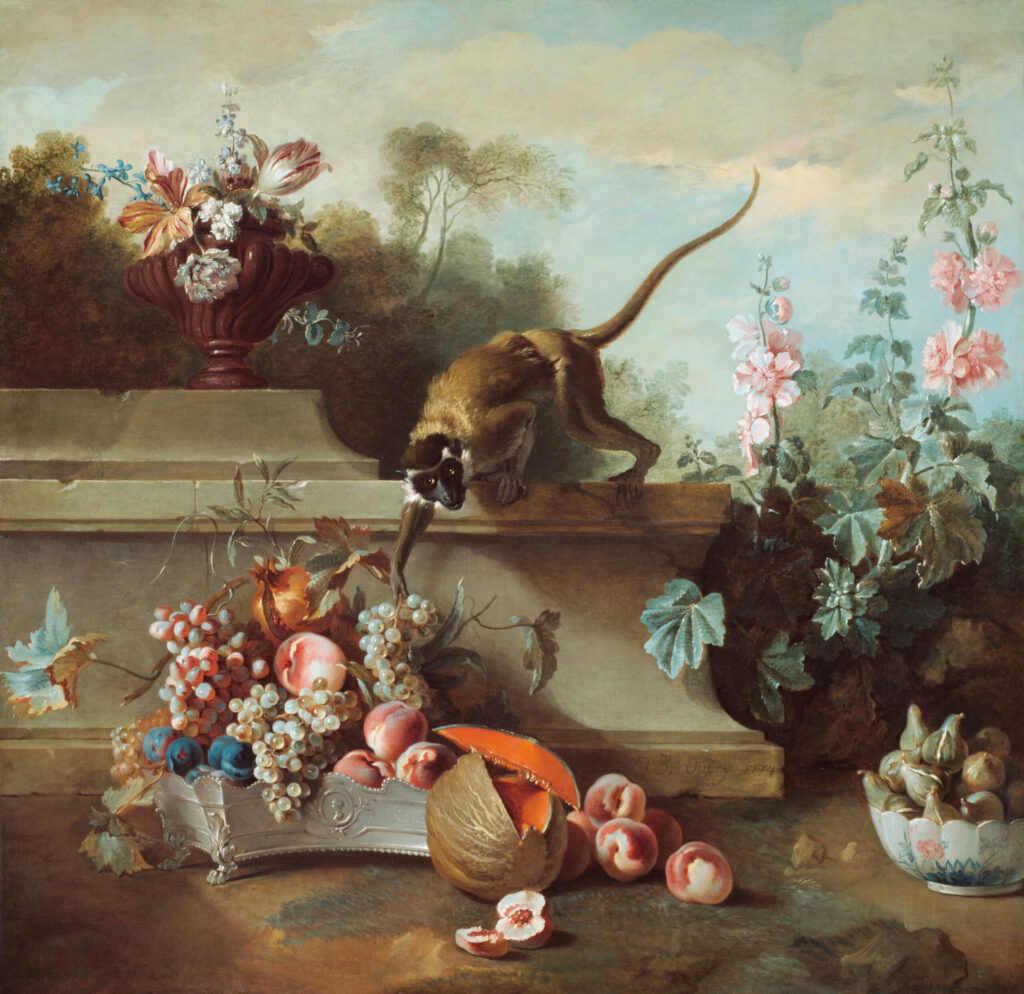
A Meeting of Civilization and Wild Instinct. In this “Still Life with Monkey, Fruits, and Flowers” from 1724, Jean-Baptiste Oudry orchestrates an encounter between civilization and wild instinct.
The feast of fruits displays remarkable opulence: velvety peaches, translucent grape clusters, and partially opened melons revealing their scarlet flesh. The balance of this composition is deliciously disrupted by the intrusion of a golden-furred monkey who, in a bold impulse, ventures from the balustrade. Its sharp gaze and alert posture create dramatic tension at the heart of this scene. The bluish-tinted landscape background, the hollyhocks rising on the right, and the vase of flowers on the left complete this theater of visual seduction. Here, Oudry deploys technical virtuosity in rendering textures—the down of peaches, the shine of grapes, the velvet of petals—while infusing a narrative vivacity that transcends the genre.
Additional Information
- Title: “Still Life with Monkey, Fruits, and Flowers” by Jean-Baptiste Oudry, 1724
- Dimensions: 141.6 x 144.8 cm (55 3/4 x 57 in.)
- Location: The Art Institute of Chicago
- https://www.artic.edu/artworks/94126/still-life-with-monkey-fruits-and-flowers
Jean-Baptiste Oudry (1686-1755) established himself as one of the masters of animal painting and still life during the reign of Louis XV. Trained under Nicolas de Largillierre, he won royal favor through his talent for capturing both the anatomy and character of animals. Appointed official painter of royal hunts in 1726, he also served as artistic director of the Beauvais Manufactory.
His work is characterized by a fusion between the heritage of the great Flemish masters of the previous century and French Rococo sensibility. His mastery of light effects, taste for narrative compositions, and acute sense of observation make him an essential figure in the evolution of French decorative painting in the 18th century, anticipating the more naturalistic approach that would flourish in subsequent decades.



